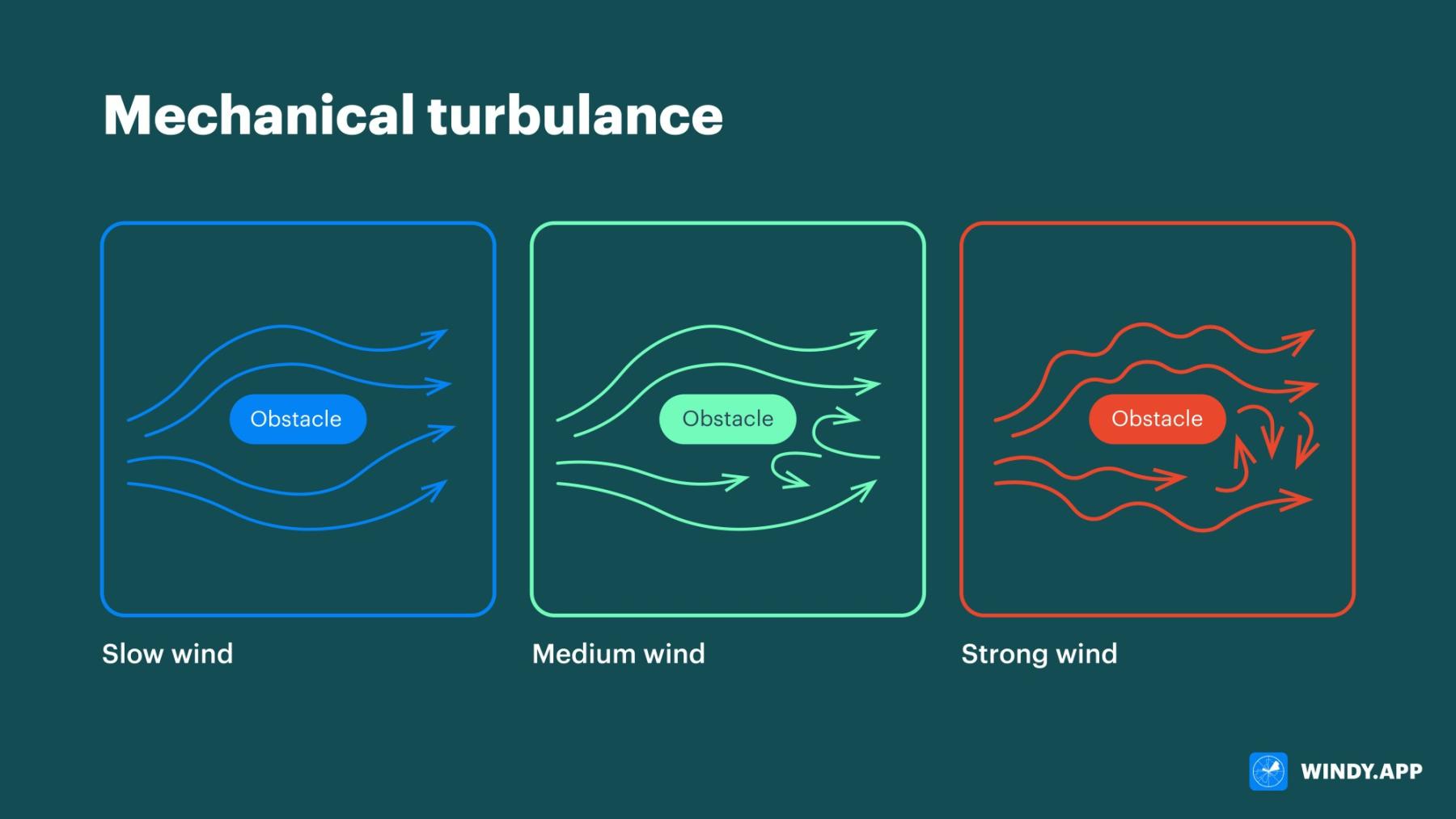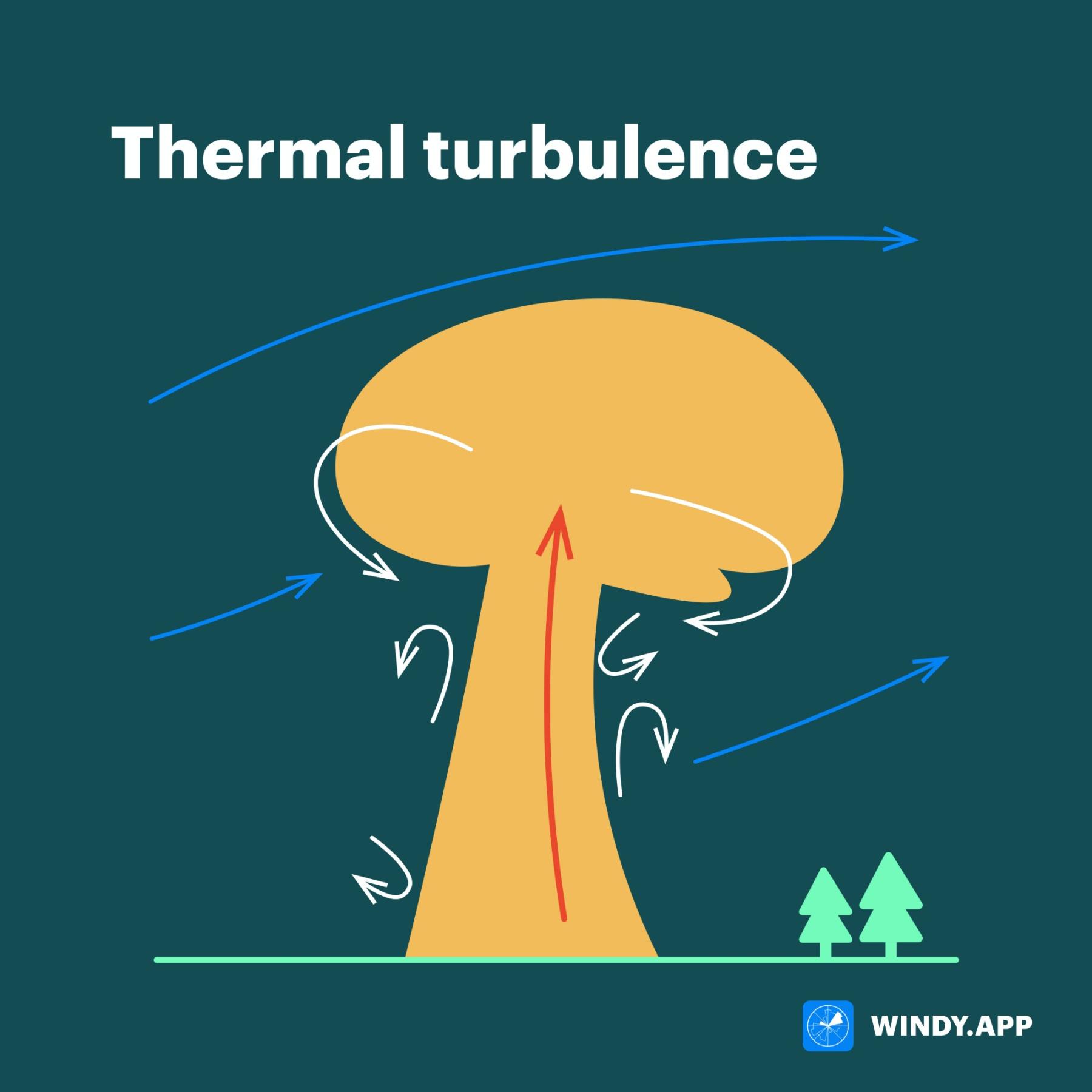
What is turbulence and how it works
Turbulence, in simple terms, is a random flow of air. In this new lesson of the Windy.app Meteorological Textbook (WMT) and newsletter for better weather forecasting you will learn more about turbulence and how it works.
Mechanical turbulence
Mechanical turbulence is when solids — a mountain, a forest, or a house — break the air flow. If the air velocity is low, the flow can simply deflect. But at high speeds, the flow is broken up with the formation of vortices which create a trace — that is already a real turbulence.

Mechanical turbulence: weak, moderate and strong winds flow around an obstacle. Illustration: Valerya Milovanova / Windy.app
If you put your palm or feet against a fast-flowing stream or put your feet in it, there will be a slight turbulence right after your palm.
Thermal turbulence
Thermal turbulence is when the air heats up at the ground, becomes lighter and begins to rise. At the top there is a cut of the wind — two layers of air are in contact, which have different speeds and directions. Just the boundary between the two layers becomes a zone of turbulence.

Thermal turbulence. Illustration: Valerya Milovanova / Windy.app
Text: Windy.app team
Cover photo: Stephan Mahlkea / Unsplash
Illustrations: Valerya Milovanova, an illustrator with a degree from the British Higher School of Art and Design (BHSAD) of Universal University
You will also find useful
Dew point explaining in simple words
Cold fronts and warm fronts explanation in simple words
Latest News
Professional Weather App
Get a detailed online 10 day weather forecast, live worldwide wind map and local weather reports from the most accurate weather models.
Compare spot conditions, ask locals in the app chat, discover meteo lessons, and share your experience in our Windy.app Community.
Be sure with Windy.app.



